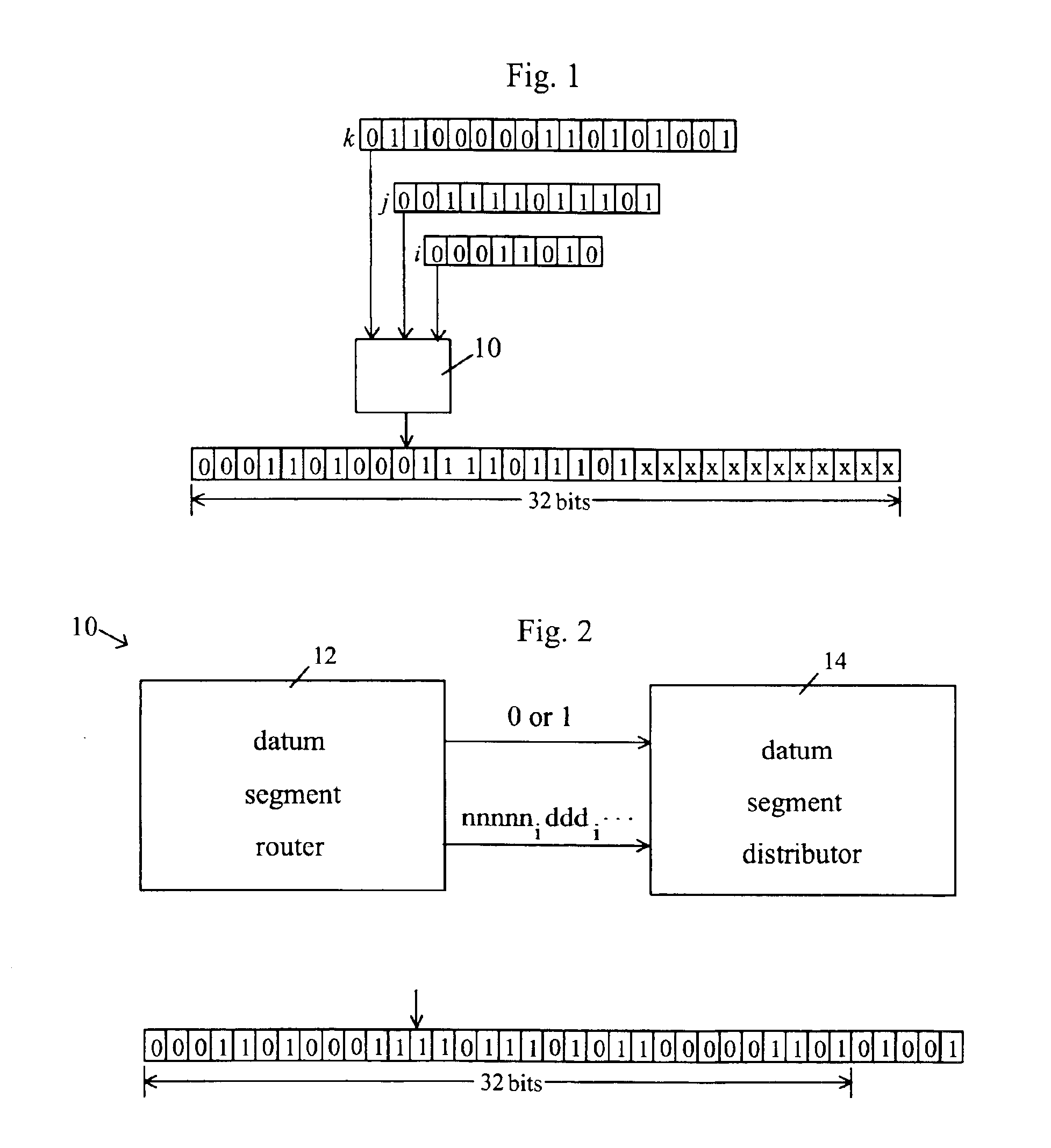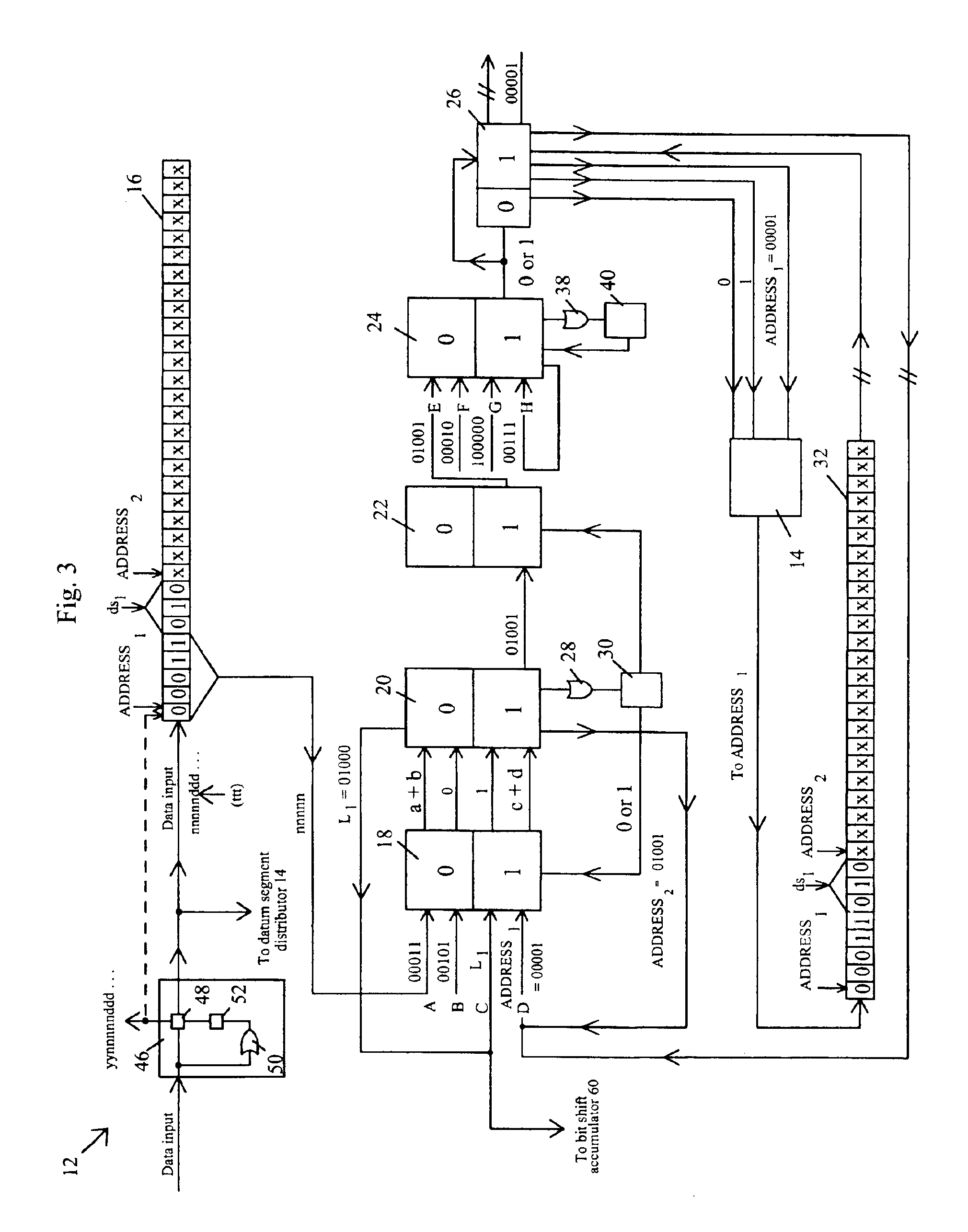Asynchronous, data-activated concatenator for variable length datum segments
a data-activated concatenator and variable-length technology, applied in the direction of parallel/series conversion, code conversion, electrical apparatus, etc., can solve the problems of meaningless output, and achieve the effect of improving the efficiency of the output transfer
- Summary
- Abstract
- Description
- Claims
- Application Information
AI Technical Summary
Benefits of technology
Problems solved by technology
Method used
Image
Examples
Embodiment Construction
[0032]The broad aspects of the invention as to function are shown in FIG. 1, which depicts concatenator 10, which will be seen to be an asynchronous gate circuit operating in response to data as received, and into which are to be fed a series of datum segments i, j, k, . . . that may have varying bit lengths and are generally expressed in the form nnnnnddd . . . , where “nnnnn” is the binary code for the number of bits (nnnnn)2 in the following datum segment “ddd . . . ” If the datum segments to be treated are not initially in the nnnnnddd . . . form, they can be put into that form through the use, e.g., of an instance of the data enumerator of U.S. Pat. No. 6,580,378 that has been configured to count bits rather than bytes, and the concatenator of U.S. Pat. No. 6,208,275, both of which patents are hereby incorporated herein by these references. For reasons of space in the drawings, in the main discussion of this invention herein a register length of 32 bits is described, to which t...
PUM
 Login to View More
Login to View More Abstract
Description
Claims
Application Information
 Login to View More
Login to View More - R&D
- Intellectual Property
- Life Sciences
- Materials
- Tech Scout
- Unparalleled Data Quality
- Higher Quality Content
- 60% Fewer Hallucinations
Browse by: Latest US Patents, China's latest patents, Technical Efficacy Thesaurus, Application Domain, Technology Topic, Popular Technical Reports.
© 2025 PatSnap. All rights reserved.Legal|Privacy policy|Modern Slavery Act Transparency Statement|Sitemap|About US| Contact US: help@patsnap.com



